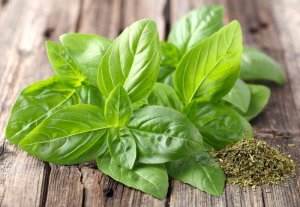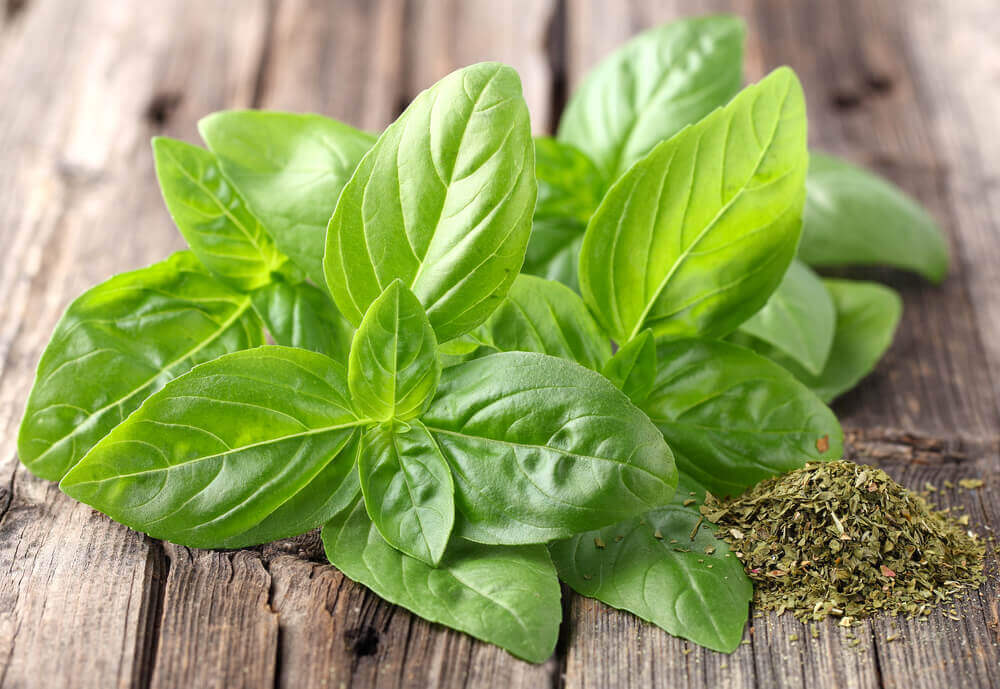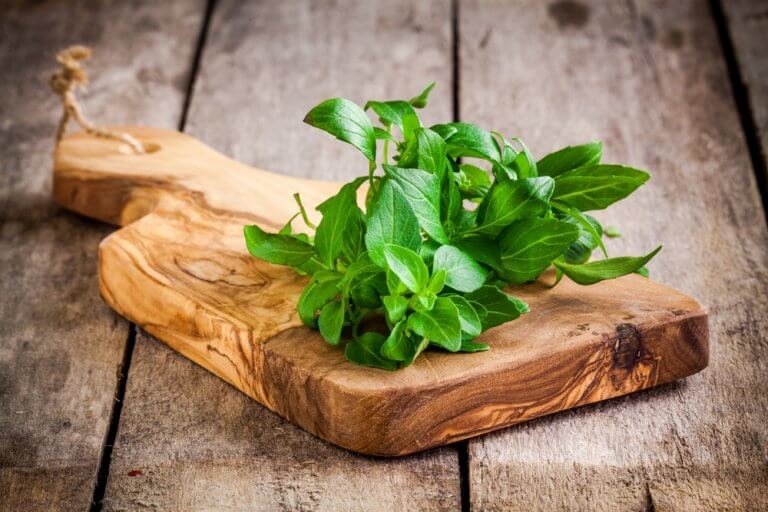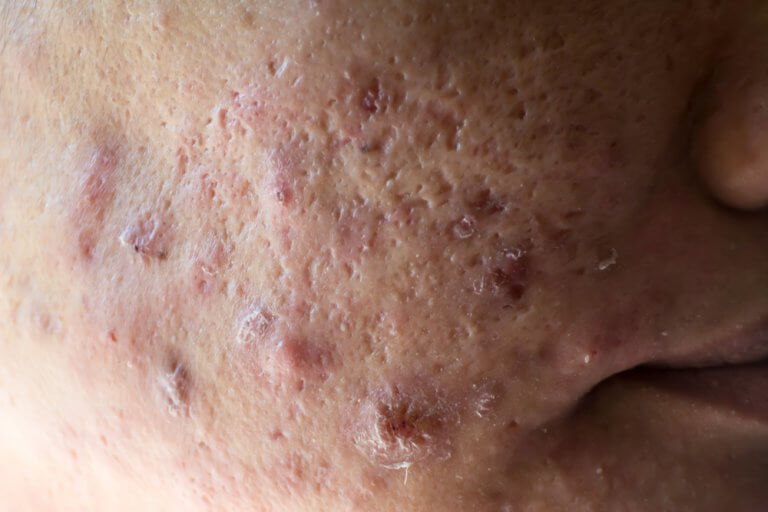The Incredible Medicinal Properties of Basil


Reviewed and approved by the biologist Cesar Paul González
Basil (Ocimum basilicum) comes from Asia and belongs to the Lamiaceae family. It has jagged and oval-shaped leaves and its white or pink flowers grow in bunches. The plant usually measures around 60 cm tall.
Read this article and discover the incredible medicinal properties of basil.
Basil has a surprising amount of healing properties and is easy to use to enhance your health. Here are just a few of them…
The benefits of basil

Basil has been used to relieve many different ailmnets thanks conditions to its various medicinal properties. Some of its benefits include:
- This amazing plant contains antispasmodic agents that help prevent or relieve muscle weakness, indigestion, and pain in many parts of the body.
- Basil helps with fatigue, inflammation from physical fatigue, and helps fight depression. In addition, it’s also used to curb anxiety.
- Plus, it’s useful in massages to calm cramps caused by menstruation. Its soothing aroma is present in various body oils.
- In addition, it’s an excellent natural mosquito repellent. Its antibacterial properties are used to treat snake bites and other infectious bites.
- Basil is also known to promote healing for wounds in natural ointments.
- When consumed as a tea or drink in a way that doesn’t alter its original composition, it can be a great aid to the immune system and the body’s defenses.
Natural basil remedies
In this article, we’ll share some remedies you can make from the comfort of your home using basil.

Sore throat
Basil can be used as a syrup along with sugar and water to relieve a cough or a dry throat.
Ingredients
- 2 cups of water (500 ml)
- 2 cup of basil leaves (100 g)
- Honey (as needed)
How should you use it?
- In a pot, bring the water and basil to a boil.
- Empty the contents into many cups and add a tablespoon of honey into each one.
- Drink every time you feel discomfort.
Skin care

This plant is also known as the plant of longevity. It’s often used by skin care aficionados.
To take advantage of its benefits, gently rub a leaf over your skin every day. This will give your skin a natural glow and will enhance its appearance.
Ingredients
- 1 basil leaf
- 1 cup of water (250 ml)
How should you use it?
- Heat a cup of water and add the basil leaf.
- Let sit and wring the leaf a little.
- Once the mixture has reached a tolerable temperature for your skin (preferably warm), and massage into your skin.
- Use every day before going to bed.
Acne

Basil purifies the blood and removes toxins, leading to healthier skin.
How should you use it?
- You can eat three to five basil leaves in the morning without having to cook them.
- You can also make masks with its leaves and let them sit for 30 minutes.
It improves digestion

Basil has natural purifying properties that help your body eliminate anything it doesn’t need. At the same time, its anti-inflammatory properties help curb heartburn symptoms.
Ingredients
- 2 tablespoons of basil (30 g)
- 1 cup of water (250 ml)
How should you use it?
- First, wash the basil leaves thoroughly and place them in a cup.
- Add boiling water and mix well.
- Let sit for 5 minutes; drink and enjoy.
- Drink this tea in the morning.
Precautions for using basil
As a precautionary measure, make sure to discuss the use of any plant with a professional, since everyone can react differently to it.
Note: Pregnant women should limit their intake to avoid complications.
This wonderful plant is called the holy herb not only because of its mythology, but because it seems to be a remedy for everything.
All cited sources were thoroughly reviewed by our team to ensure their quality, reliability, currency, and validity. The bibliography of this article was considered reliable and of academic or scientific accuracy.
- Amor G, Sabbah M, Caputo L, Idbella M, De Feo V, Porta R, Fechtali T, Mauriello G. Basil Essential Oil: Composition, Antimicrobial Properties, and Microencapsulation to Produce Active Chitosan Films for Food Packaging. Foods. 2021 Jan 8;10(1):121.
- Aminian AR, Mohebbati R, Boskabady MH. The Effect of Ocimum basilicum L. and Its Main Ingredients on Respiratory Disorders: An Experimental, Preclinical, and Clinical Review. Front Pharmacol. 2022 Jan 3;12:805391.
- Askari VR, Baradaran Rahimi V, Ghorbani A, Rakhshandeh H. Hypnotic Effect of Ocimum basilicum on Pentobarbital-Induced Sleep in Mice. Iran Red Crescent Med J. 2016 Mar 27;18(7):e24261.
- Bensaid A, Boudard F, Servent A, Morel S, Portet K, Guzman C, Vitou M, Bichon F, Poucheret P. Differential Nutrition-Health Properties of Ocimum basilicum Leaf and Stem Extracts. Foods. 2022 Jun 9;11(12):1699.
- Eftekhar N, Moghimi A, Mohammadian Roshan N, Saadat S, Boskabady MH. Immunomodulatory and anti-inflammatory effects of hydro-ethanolic extract of Ocimum basilicum leaves and its effect on lung pathological changes in an ovalbumin-induced rat model of asthma. BMC Complement Altern Med. 2019 Dec 4;19(1):349.
- Franca CS, Menezes FS, Costa LC, Niculau ES, Alves PB, Pinto JE, Marçal RM. Analgesic and antidiarrheal properties of Ocimum selloi essential oil in mice. Fitoterapia. 2008 Dec;79(7-8):569-73.
- Genfi AKA, Larbie C, Emikpe BO, Oyagbemi AA, Firempong CK, Adjei CO. Modulation of Oxidative Stress and Inflammatory Cytokines as Therapeutic Mechanisms of Ocimum americanum L Extract in Carbon Tetrachloride and Acetaminophen-Induced Toxicity in Rats. J Evid Based Integr Med. 2020 Jan-Dec;25:2515690X20938002.
- Madeira SV, Matos FJ, Leal-Cardoso JH, Criddle DN. Relaxant effects of the essential oil of Ocimum gratissimum on isolated ileum of the guinea pig. J Ethnopharmacol. 2002 Jun;81(1):1-4.
This text is provided for informational purposes only and does not replace consultation with a professional. If in doubt, consult your specialist.








